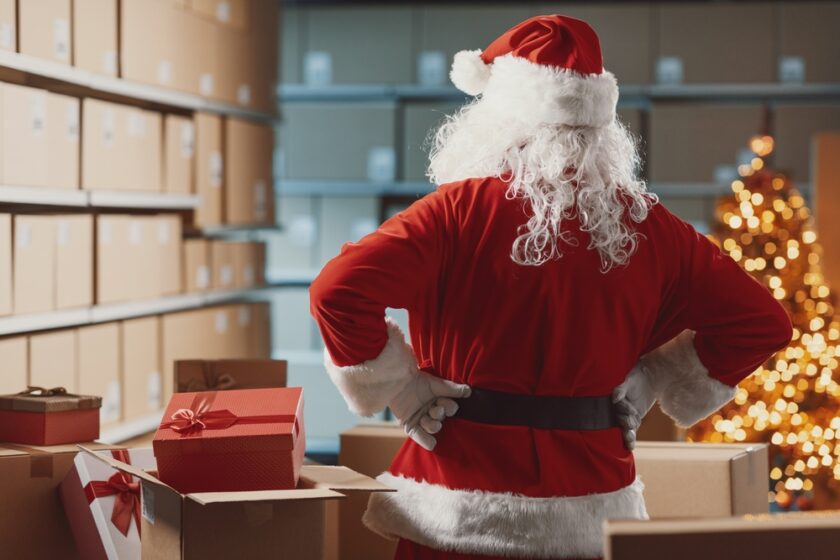Golf: America’s pastime. What, you thought it was baseball? No way. Football maybe? Still nope. It’s golf. We realize this is a controversial statement. A challenge to our national pastime is a challenge to America, to freedom itself—we might as well be telling you apple pie is inferior to cherry (relax, it’s not)—but hear us out: PGA of America’s Golf 2.0 player-development initiative put the total number of golfers at 28.7 million in 2013. According to Statista, baseball had 17.56 million players in 2014. Football didn’t even come close.
All those golfers need gear—polo shirts, caps, outerwear and more—and who’s going to provide it for them? You are. Do it for your bottom line. Do it for the thrill of the big sale. Do it for freedom. Just don’t do it without first checking out these six crucial golf apparel sales tips.
1. Give end-users what they want
If you need some ideas on what golf apparel is most popular right now, John Perez, marketing associate for Tri-Mountain, Irwindale, Calif., suggested looking to the pro shop. “Features in retail are usually sought after most,” he said. That means performance features. Perez named moisture-wicking and venting as two of the most sought-after, as users want gear that provides an edge on the green. “When on the course, comfort and body temperature is huge. Getting a shirt that helps regulate these factors is important,” he explained. “Also, pros are wearing slimmer fits—loose and hanging material could potentially hinder movements on the course.”
As far as aesthetics go, Joel Freet, CEO of Cutter & Buck, Seattle, noted that bright colors are big, while gray has become the “new neutral of the moment.” He also suggested apparel that is fashionable enough to wear anywhere—not just for 18 holes. “End-users are looking for versatility in their items, to be certain that not only is it a nice gift, but a great high-quality item that will be worn again and again,” he said. “If it can be worn on and off the course, it’s all the better.”
2. Brand name isn’t everything
Name brands are big in golf. Frequent players likely will have a preferred brand—Nike, Callaway, Ashworth, etc.—and casual golfers and fans may be influenced by the stuff they see on TV, which often happens to be those same big brands. While many promotional suppliers offer name-brand gear, it’s not necessarily essential to go that route. “If your customer wants the brand name and is willing to pay more for a brand name, great,” said Perez. “But customers need to know there is apparel with the same or similar features, that [isn’t from] a major brand and costs less.”
Freet agreed. “Some brands are more appealing to different demographics, but we like to have a great variety of styles that will work for different groups or more diverse groups,” he noted.
3. Layer up
The very word “golf” conjures up images of sunny, blue skies and gentle spring breezes, but if you’ve ever watched an event staged at St. Andrews (or anywhere else in the U.K.), you know the weather isn’t always so cooperative. Even in good-weather markets, golfers are going to need outerwear for the occasional chilly day or sudden rainstorm. And where that has typically meant a windbreaker or jacket, Freet has noticed increased demand for knit outerwear. “Times change and what people are expecting for a layering piece has shifted considerably to what we call overknits,” he said. “These layering pieces can have a variety of technical features—we have added water repellency to many of ours—and are great lifestyle pieces that are as comfortable inside as outside.”
4. Think outside the golf outing
They’re the obvious ones, sure, but golf outings aren’t the only sales opportunities for promotional golf apparel. Freet listed corporate gifting and incentive programs as the biggest avenues of golf gear, and suggested looking for sales in other off-the-green venues, such as the driving range. “Getting people out onto the golf course is great if there is time, but expanding promotions to driving ranges has been a great way to do a promotional event that doesn’t even require the user be a golfer,” Freet explained. “Just getting people swinging the club a bit is fun, but so much of the fun comes from the camaraderie and the laughs.”
5. Go custom
You may, at some point in your golf apparel promotion, think to yourself, “This basic polo can hold a small logo on the upper chest and that is adequate enough for this corporate outing.” Fight that line of thinking. The subtle, reserved look is fine, of course, and fits with golf’s “gentleman’s game” ethos, but don’t be afraid to explore other options with your client. “Don’t just be another me-too tournament event,” said Bill Patterson, vice president of HTT Headwear, Murrieta, Calif. “Create custom products to show that this is the one tournament this year that you should invest your time and money—no one needs another navy blue Nike polo.” He noted that sublimation, piping and contrast color panels are becoming popular.
Perez mentioned another trending decoration technique. “It’s not new or limited to golf apparel, but I like laser decoration because it doesn’t add anything to the garment,” he said. “There’s no extra weight or backing like in other decoration methods, so your level of comfort isn’t compromised.”
6. Ask questions
There are a lot of variables in a golf promotion, from event type to location to the target audience. Freet recommended doing some thorough scouting before a promotion to better understand the needs of the end-buyer and end-user alike. “Is the event off-site? Are the people going to be on vacation? Are the guests expected to put on the item right away? What’s the demo—men and women? What is the delivery method?” he said. “All of these things add up to the right set of parameters that you need to be thinking about when choosing options.”



